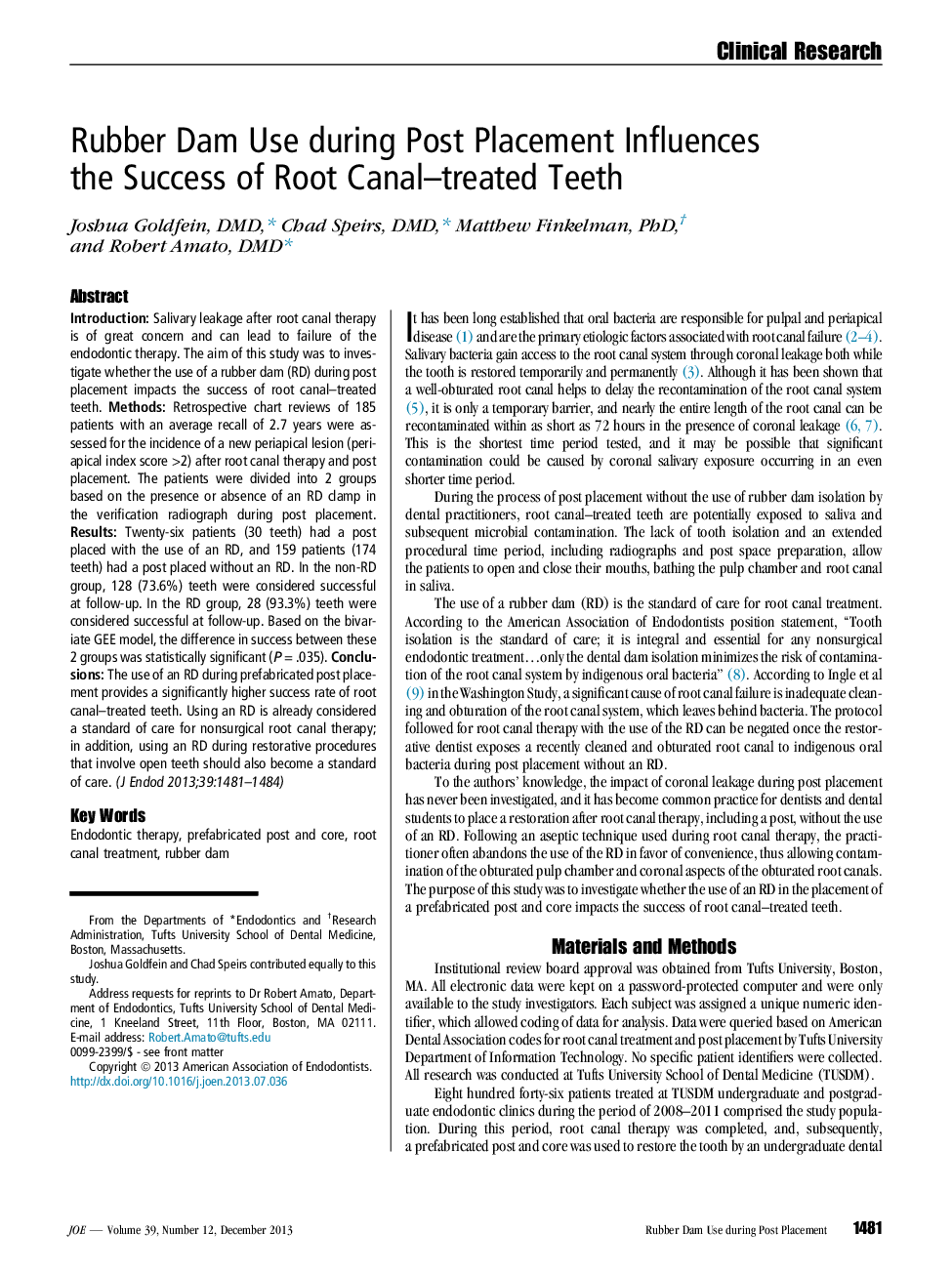| Article ID | Journal | Published Year | Pages | File Type |
|---|---|---|---|---|
| 3148659 | Journal of Endodontics | 2013 | 4 Pages |
IntroductionSalivary leakage after root canal therapy is of great concern and can lead to failure of the endodontic therapy. The aim of this study was to investigate whether the use of a rubber dam (RD) during post placement impacts the success of root canal–treated teeth.MethodsRetrospective chart reviews of 185 patients with an average recall of 2.7 years were assessed for the incidence of a new periapical lesion (periapical index score >2) after root canal therapy and post placement. The patients were divided into 2 groups based on the presence or absence of an RD clamp in the verification radiograph during post placement.ResultsTwenty-six patients (30 teeth) had a post placed with the use of an RD, and 159 patients (174 teeth) had a post placed without an RD. In the non-RD group, 128 (73.6%) teeth were considered successful at follow-up. In the RD group, 28 (93.3%) teeth were considered successful at follow-up. Based on the bivariate GEE model, the difference in success between these 2 groups was statistically significant (P = .035).ConclusionsThe use of an RD during prefabricated post placement provides a significantly higher success rate of root canal–treated teeth. Using an RD is already considered a standard of care for nonsurgical root canal therapy; in addition, using an RD during restorative procedures that involve open teeth should also become a standard of care.
